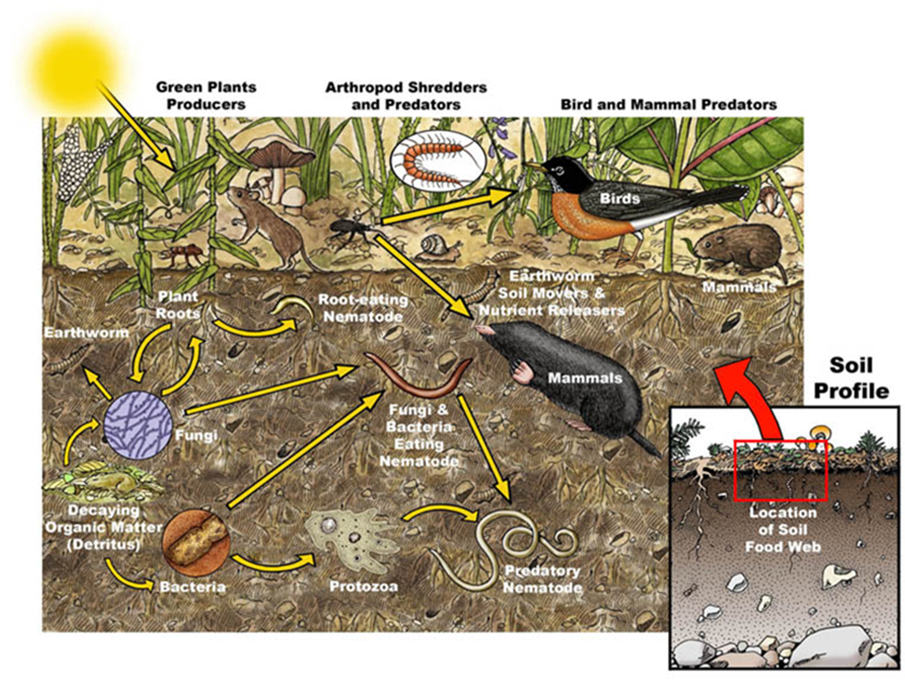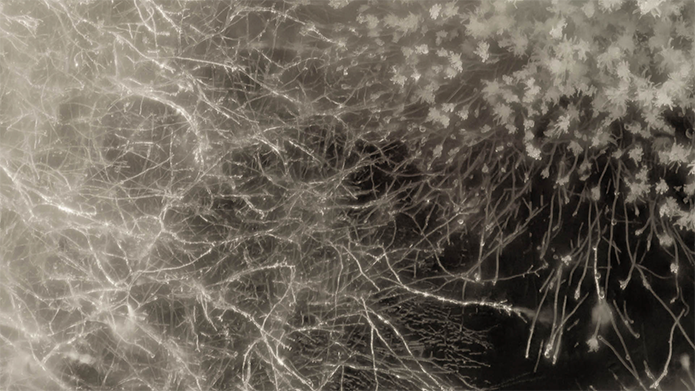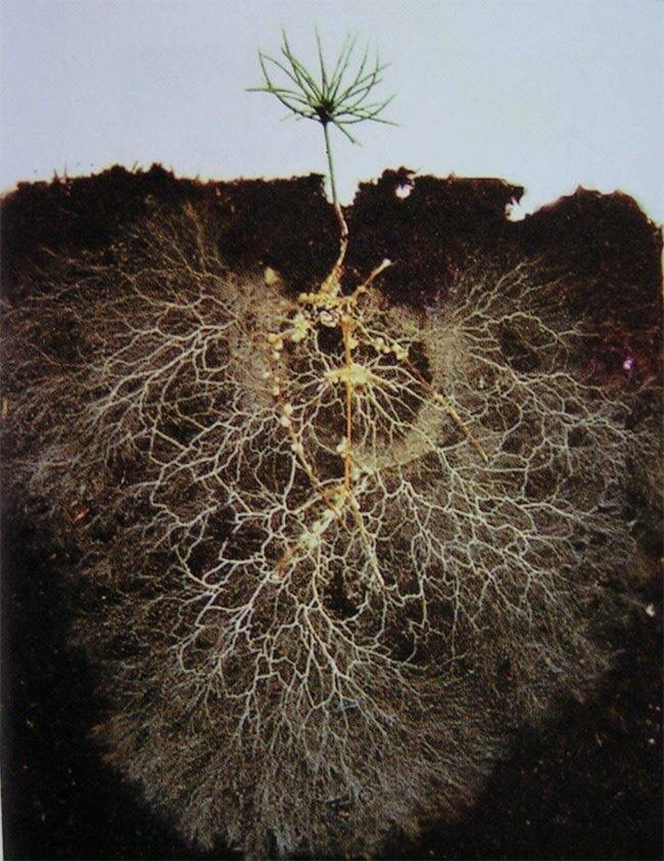
Foundation of Forest Ecosystems lies in Biological Properties of Soil that support storing and transmitting organic matter, water, and nutrients. A fantastic array of organisms including Plant Roots, Microflora (bacteria, archaea, fungi, actinomycetes), Microfauna (nematodes, protozoa), Macrofauna (earthworms, soil arthropods, rodents) make the soil a lively place.
These organisms carry on numerous vital ecosystem processes… “chopping and shredding” organic matter as it passes through their guts, “tilling” the forest floor and mineral soil, burrowing and creating pores, “recycling” through decomposition processes, controlling each other by grazing and predation, and joining in symbioses of mycorrhizae and root nodules.

Under the soil in a forest there are these massive networks of mycelium – the mass of interwoven tubular filaments (hyphae) of fungi. This miles and miles of mycelium network acts as a web underground growing links between fungi and connecting the roots of different plants to each other. Trees are known to communicate and share nutrients with other trees and plants through the passages of mycelium network.
ROLE OF HITECH ORGANIC IN AFFORESTATION
Regenerating a forest ecosystem is time consuming, natural growth takes decades, sometimes centuries. We can accentuate the process scientifically through rejuvenation of selective beneficial microbes in the soil system, which accelerate nutrient availability so much so to trigger balanced life activity in the entire food chain and establish a thriving forest ecosystem at significatly less time.
Vesicular-arbuscular mycorrhiza (VAM) is formed by the symbiotic association between certain phycomycetous fungi and angiosperm roots. The fungus colonizes the root cortex forming a mycelial network and characteristic vesicles (bladder-like structures) and arbuscules (branched finger-like hyphae).
The plant provides the fungus with photosynthetically derived carbohydrate, while the fungus supplies the plant roots with nutrients. They enhance the ability of plants to absorb phosphorus from soil, also increase the phyto-availability of micronutrients like copper, zinc, boron, molybdenum…
VAM enlarges root areas of host plants and improves its efficiency of water absorption. Fungal networks also boost their host plants' immune systems.

Using VAM along with bio-fertilizer during afforestation helps the soil ecosystem thrive within a short period of time enhancing root growth and rapid vegetative propagation of the forest plants. Helps plants to withstand effects of draught and other environmental stresses.
GENERAL INSTRUCTIONS for PLANTATION
Seedling Treatment: Mix Bom Shield 250gms in 20lit of water and spray/moist around the roots of the plants (10ml per plant) before planting
Pit Soil Treatment: Mix Bom Biomics (10-15gm) & BioVam (5-10gm) with compost and soil material to apply in the pit.
Input Management 1yr onwards: Broadcast Bom Biomics (15-20gm) per plant two times a year – mix with compost or soil material and apply ring/collar around the root of the plant.
Weed Management: Physical management only, use the chopped weeds as mulching material.